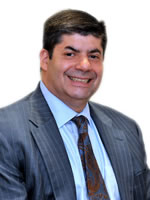Allegro
Can you copyright a chord progression?
Legal Corner
Volume 117, No. 2February, 2017

LEGAL CORNER
Harvey Mars, Esq.
Harvey Mars is counsel to Local 802. Legal questions from members are welcome. E-mail them to HsmLaborLaw@HarveyMarsAttorney.com. Harvey Mars’s previous articles in this series are archived at www.HarveyMarsAttorney.com. (Click on “Publications & Articles” from the top menu.) Nothing here or in previous articles should be construed as formal legal advice given in the context of an attorney-client relationship.
In 2007 while he was performing at Penn State University, comedian Rob Paravonian presented a brilliant comedic interlude called the “Pachelbel Rant.” (For those who are interested in viewing this act, it can be found on YouTube.) In it, he performed Pachelbel’s Canon and then demonstrated in a very humorous way that at least 16 popular songs utilized the same chord progression contained in the baroque masterpiece. With aplomb, Mr. Paravonian played on his guitar Bob Marley’s “No Woman, No Cry,” the Beatles’ “Let it Be” and even “We’re Not Gonna Take It” by Twisted Sister and revealed that each had lifted the same chords as Pachelbel.
While being a very funny routine, it amply demonstrates that many pieces of music, classical or otherwise, have been the inspiration behind many popular tunes. As it stands, Pachelbel’s Canon, which is roughly 300 years old, is a work in the public domain and thus is not entitled to copyright protection. Thus the songs that used the same chords are immune from suit. But what if the canon wasn’t in the public domain? Would Pachelbel’s descendants be entitled to bring a copyright suit, simply because other pieces used the same chord progression?
As far-fetched as this may sound, a recent appeal filed in the U.S. court of appeals for the ninth circuit may provide a very surprising – and worrisome – answer to this question. The appeal concerns “Blurred Lines,” a 2013 piece written and performed by Pharrell Williams, Robin Thicke and T.I. (Clifford Harris, Jr.). These artists were sued by Marvin Gaye’s estate, which asserted that the song contained similar musical elements to Mr. Gaye’s 1977 song “Got to Give it Up.” While the written scores for these two songs are vastly different, a jury awarded millions of dollars ($5.3 million to be precise) to Marvin Gaye’s estate, finding that “Blurred Lines” blurred the line of copyright protection.
On Aug. 23, 2016 the defendants filed an appeal asserting that the trial court utilized the wrong legal standards. They argued that the only material entitled to copyright protection was the actual written sheet music, not the sound recordings. It appears that the defendants may have the better argument, since the Copyright Act of 1909 extends copyright protection only to sheet music that is registered and deposited at the Copyright Office and not the compositional elements of the sound recording. Case law holds that an artist may successfully sue another artist for plaigarizing music by showing that the defendant had access to the plaintiff’s work and that the two works are substantially similar in idea and in expression of the idea. “Substantial similarity” is determined under an objective extrinsic test and a subjective test, both of which look only to protected elements of the copyrighted work.
The trial court’s mistake here appears to be its decision to permit the jury to compare sound recordings of the works, which contained non-protected elements, rather than the actual written scores that were filed with the copyright office. Under these legal standards, in this case it appears that the litigation should have been dismissed prior to trial. Now it’s up to the ninth circuit to hopefully correct this error.
More than 200 musicians and recording artists have filed “friend of the court” amicus briefs in support of the appeal. In it they assert that if the ruling is not reversed it will have an “adverse impact on their own creativity, on the creativity of future artists, and on the music industry in general.” They have a point. If a successful infringement action can be brought simply because pieces of music have a similar vibe as a result of production choices – or similar chord progressions and rhythm patterns – it is feared that no piece of music will be immune from suit. If it’s really possible to copyright a chord progression, could the descendants of Pachelbel sue the Beatles for using the same chords?
Interestingly enough, roughly at the same time that Marvin Gaye’s estate received its multi-million dollar verdict, Jimmy Page and Robert Plant were exonerated in a copyright infringement suit that was brought against them by the American rock group Spirit, allegedly for lifting chords from Spirit’s 1968 piece “Taurus” and using them in “Stairway to Heaven.” In that case, the trial judge specifically rejected expert opinion that was based upon a comparison of non-protected sound recordings. There, the judge insisted that recordings heard by the jury had to be from the existing sheet music, without any extrinsic musical elements. This, in fact, made all the difference in the results of the trial.
Hopefully, the ninth circuit will take notice of this verdict and not blur the lines of copyright protection. I’ll follow the appellate court’s docket and report on the result.
